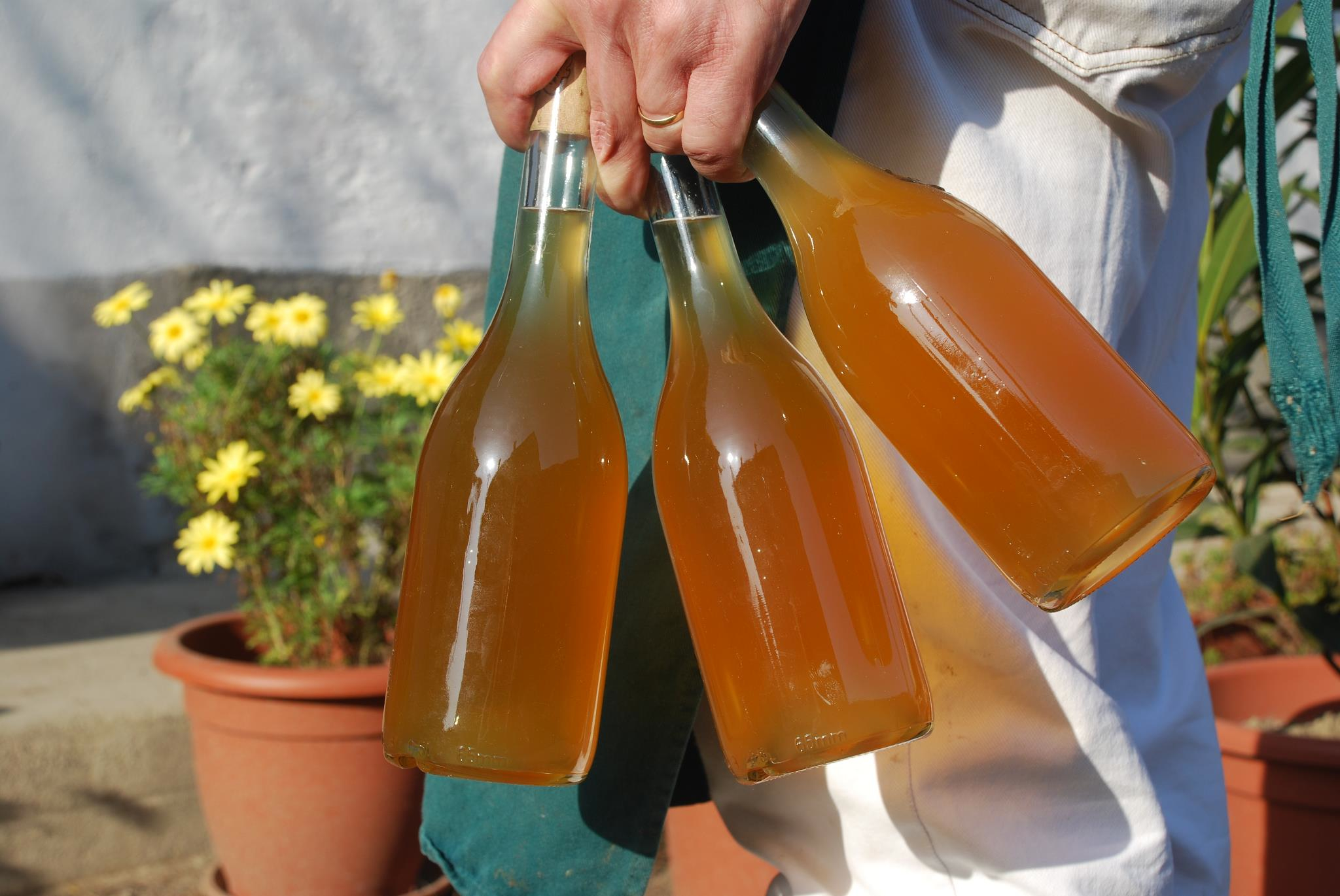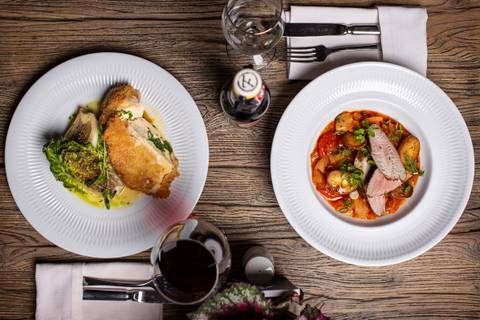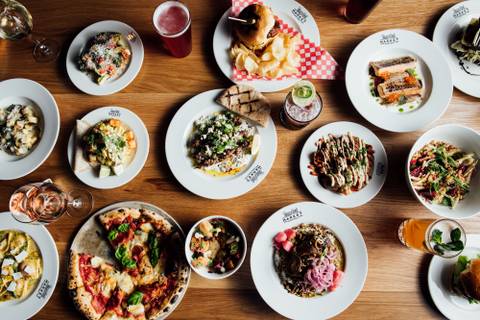The hills of Hungary’s globally revered Tokaj wine region are crisscrossed with premier vineyards cultivated for centuries – this is the source of golden sweet Aszú, long esteemed as one of the world’s most desirable libations. Blessed with an absolutely unique combination of geological and geographical conditions, this terrific terroir is the only place where Aszú can be made, but the area now flourishes anew as its innovative winemakers also produce several other extraordinary varieties.
Sited in Hungary’s north-eastern corner where foothills of the Carpathian Mountains first rise from the Great Hungarian Plain, Tokaj contains remarkably mineral-rich soils originally formed by volcanic eruptions of 15 million years ago, and enhanced much later when the entire region was submerged under what is now the Mediterranean and imparted with profuse clay deposits. Subsequent volcanic activity added valuable loess to the mix. Coinciding with this potent geological blend, Tokaj is home to the confluence of Hungary’s Tisza and Bodrog rivers, and the area’s latitude generally delivers ample sunshine from early spring through late autumn.

This fortunate fusion of nature sets the stage for one of the world’s most singular viticultural phenomena. Every autumn, the accumulated summertime warmth of the Great Hungarian Plain floats above the cool Tisza and Bodrog waters and their surrounding marshes, resulting in thick morning mists. The low-lying fog creeps up the sunshiny south-facing hillsides and envelops the grapevines growing there, and this combination of warmth and humidity is ideal for fostering noble rot (botrytis cinerea) on ripe grapes – the fruit reacts to the fungus by emitting aromatic elements that later ameliorate the wine with a distinctive citrus taste.

The Tokaj miracle is completed when these ripe grapes stretch their skin thin enough so that tiny holes form, allowing moisture to seep out more easily with the autumn sun and wind – thus the concentrated flesh of the berry develops more intense flavours. The raisin-like grapes are carefully handpicked and gently pressed under their own weight. The resulting extract has about five times as much natural sugar as ordinary grape juice, balanced by the fine organic acids derived from the soil’s volcanic minerals. This painstaking process provides the raw materials for honey-golden Tokaji Aszú wine, featuring a mild alcohol content but a fine sweetness that was highly cherished during bygone centuries when sugar was an expensive luxury in Europe. The most treasured variety of Aszú – the pure botrytised-grape juice, called Essencia – can contain up to about 900 grams of residual sugar per litre, and can be aged for many decades so that its taste gradually refines.

Because only a relatively small percentage of grapes can be used for Aszú with every harvest, a limited amount of this wine can be produced annually, adding to its value. For centuries, high-quality Aszú was primarily enjoyed by monarchs. According to legend, it was France’s Louis XV of who gave it the nickname Wine of Kings, King of Wines. Other royals who cherished Aszú included Catherine the Great and Queen Victoria. Since the valuation of Aszú was so high, in 1700 Tokaj’s were the first winemakers in the world to classify their vineyards by terroir, determined by which plots consistently produced well-botrytised grapes.

Tokaji Aszú was Hungary’s finest export from that point through the early 20th century, but the region’s output of quality grapes was severely diminished following a devastating phylloxera outbreak and the world wars. Under Communism, quantity was emphasised over quality, so the poor condition of these historic vineyards were exacerbated by mass-farming techniques. It was only after Hungary’s régime change in 1989 that local winemakers could again properly nurture their vineyards and resume selective handpicking of appropriately botrytised grapes. With considerable foreign investment, Tokaj’s wine industry enjoyed a comprehensive renaissance that continues to this day. In 2002, it was designated a UNESCO World Heritage Site.

The primary grape varieties used to make Tokaji Aszú are Furmint, Hárslevelű and Sárga Muskotály (Yellow Muscat). In recent years, the flavoursome unbotrytised berries have increasingly been used to produce excellent dry whites as well, examples from Tokaj’s most renowned vineyards earning glowing praise from international oenophiles. Although Aszú remains the most prized product, exported around the planet by major wine traders, dry Furmint and Hárslevelű are both quickly gaining recognition as unique Hungarian products ideal for pairing with meals or drinking with friends on a sunny afternoon.
Many fine restaurants and wine bars across Budapest offer Tokaj wines, while all of Budapest’s Bortársaság wine shops carry an excellent selection of Tokaj’s best bottles. To learn more about Tokaj’s cellars and other recommendations when visiting, check out our 2020 Guide to Hungary, available free at tourist offices in Budapest and around the country.

As its wines continually improve, Tokaj itself is also growing in sophistication as a travel destination. Many wineries now feature comfortable accommodation (like the Mádi Kúria Hotel or Tokaj’s Huli Panzió) and high-quality restaurants, including Mád’s charming Gusteau in a renovated stone villa, the Első Mádi Borház bistro attached to the Szent Tamás winery and the Sárga Borház Restaurant on the Disznókő estate grounds. For a real five-star retreat with history, wine and spa relaxation in equal measure, the Andrássy Rezidencia in Tarcal dates back to the 1400s, features a cave bath along with spa treatments, and offers a five-course set dinner and quality labels from a dozen Tokaj wineries.

Balassa: As a leader of Tokaj’s renaissance, István Balassa approaches winemaking with deep appreciation for each vineyard. Try his Kakas Furmint 2018 from his low-yield vineyard in Mád, aged in 300-year-old barrels.
Barta: At a lovely mansion of in the centre of Mád that is also a convivial lodging, guests can enjoy the cosy atmosphere as much as wines such as the oak-barrel-aged Öreg Király Dűlő Harslevelű 2019, one of the best vintages of the past decade.
Demeter Zoltán: Since 1996, master winemaker Zoltán Demeter crafts exquisite single-vineyard vintages with a goal of reflecting Tokaj’s hallowed traditions and land. His sparkling whites and dry Furmints are elegantly delightful.
Disznókő: This gorgeous estate encompasses some of Tokaj’s finest vineyards, centrepieced by state-of-the-art winery facilities – if given the chance to try the wonderful 2005 Essencia by László Mészáros ('.,.a truly classic year for Tokaj'), don’t miss it.
Dobogo: Owned by Izabella Zwack of Hungary’s Unicum-producing family, this rustic winery is where Attila Domokos makes limited-edition libations such as the light, golden Furmint 2015.
Erzsébet: A multi-generational Tokaj family produces handcrafted estate wines from several prominent vineyards in cellars dating back to 1743. Their Tokaji Fordítás is only produced during excellent years, the grapes soaked and pressed for a second time. Look out for the 2013 vintage, the ideal accompaniment to cheese.
Gizella: When he took over his family’s small winery near Tokaj town, young vintner László Szilágyi melded reverence for the area’s heritage with a playful modern spirit – try his complex 2018 Furmint, augmented with a touch of Hárslevelű after a golden summer.
Gróf Dégenfeld: For over 150 years, the Dégenfeld Family continually utilizes top-quality Tokaj grapes to produce world-class wines. The Aszú 6 Puttonyos 2013 is an excellent vintage, golden in colour and lending itself to ageing.
Holdvölgy: Above labyrinthine cellars dating back to the 15th century, this ultra-modern winery is led by Tamás Gincsai. Here several wine varieties are divided into tasteful categories such as Meditation and Eloquence.
Oremus: This sprawling estate overlooking Tolcsva is innovatively designed with gravity-fed facilities to make wines as gently as possible, all overseen by Iberia-based Vega Sicilia, who took over a vineyard in poor condition in 1993. Their 6 Puttonyos Aszú 2013 will set you back a pretty penny but is considered the best vintage since 2008.
Samuel Tinon: After tending wineries all around the world, French winemaker Samuel Tinon settled down in the village of Olaszliszka to become a pioneer of dry Szamorodni, an oft-overlooked Tokaj speciality well worth trying.
Sauska: Expanding on his modern winemaking center in Villány, Hungarian tycoon Krisztián Sauska launched his Tokaj winery under the leadership of Gábor Rakaczki. Their Aszú 6 Puttonyos 2013 was lauded as 'a hedonistic pleasure' by Decanter, when bestowing it with a World Wines Platinum award.
Szent Tamás: Welcoming visitors as they come into Mád, this sophisticated winery emphasises Tokaj’s mineral cocktail that produces its incredible wines – Furmints in particular.
Szepsy: As the trailblazer behind Tokaj’s renaissance, István Szepsy continually produces top-calibre vintages in his family’s own Mád winery. The Aszú 6 Puttonyos 2007, however, remains a benchmark for its smooth and fragrant flavours with dried-apricot overtones.




